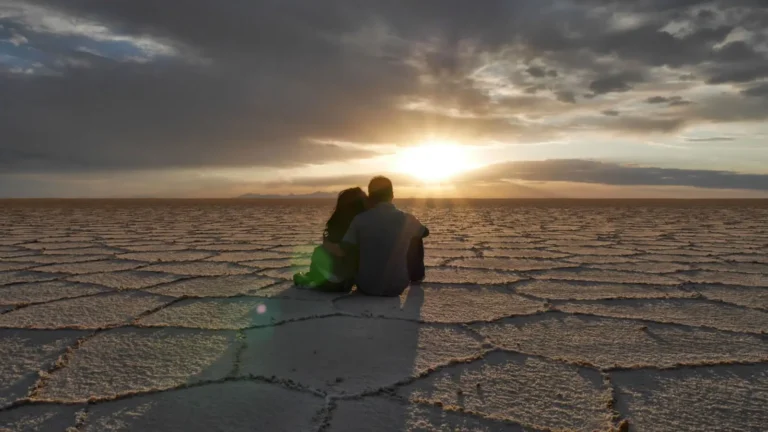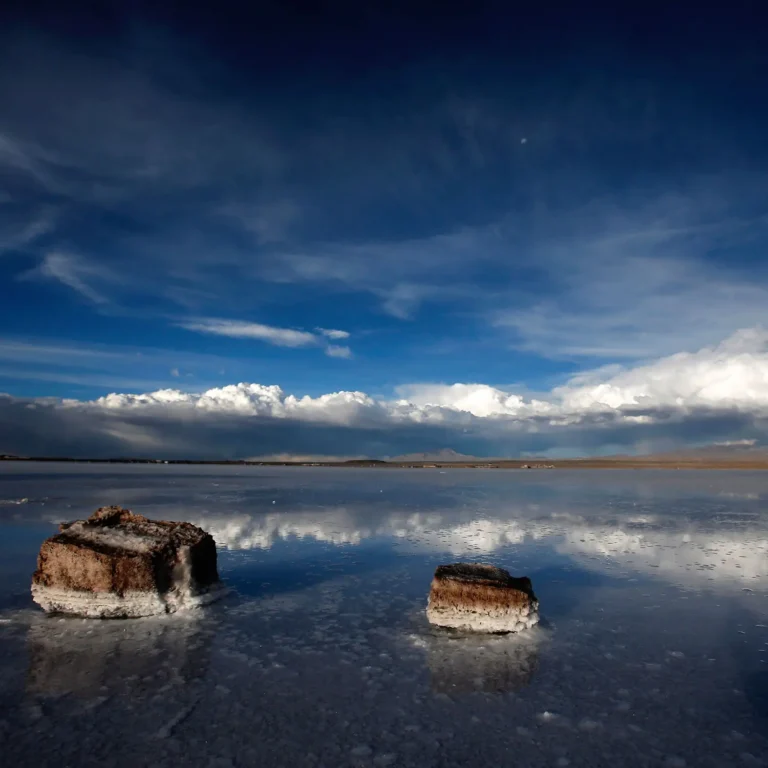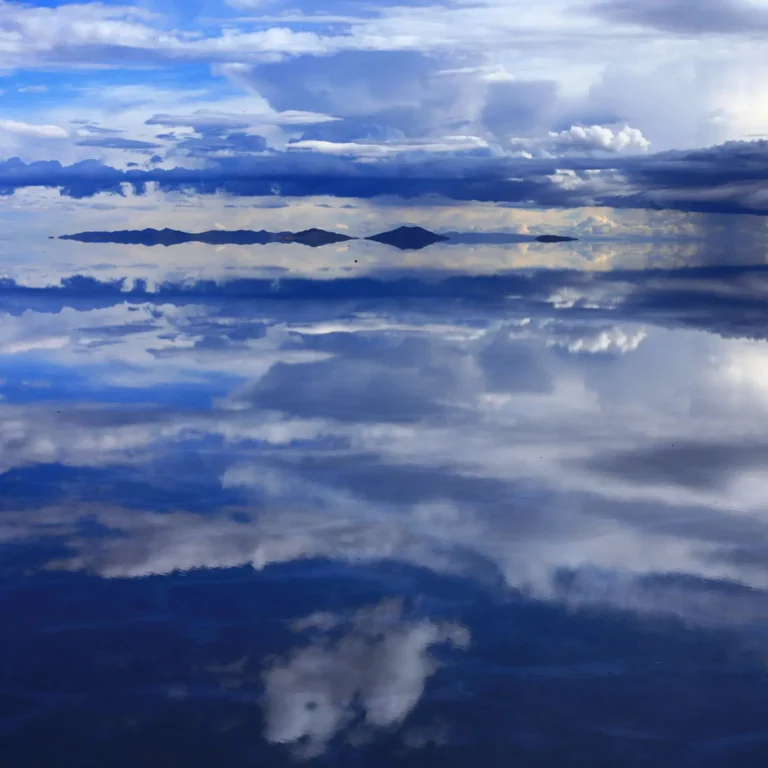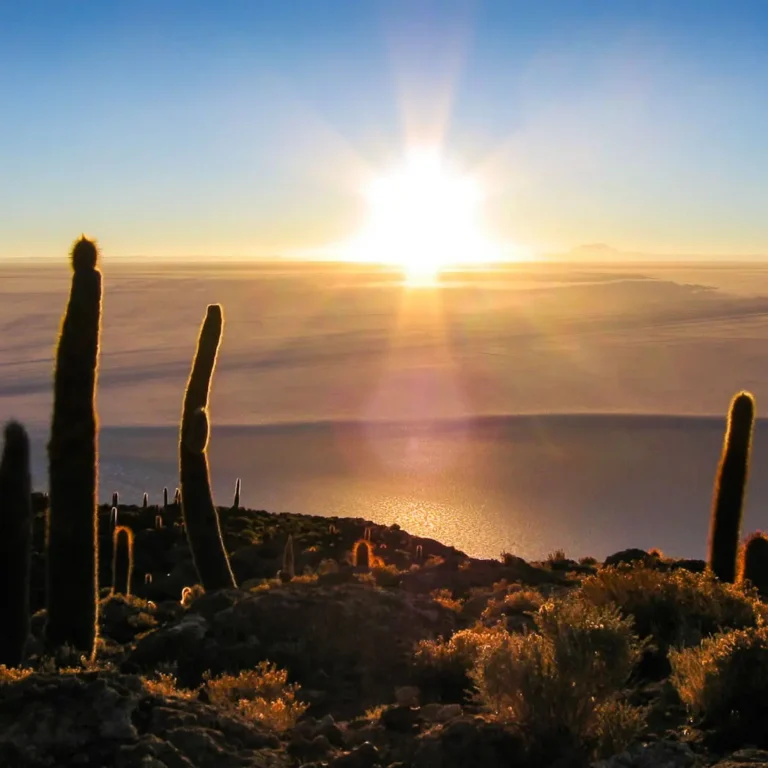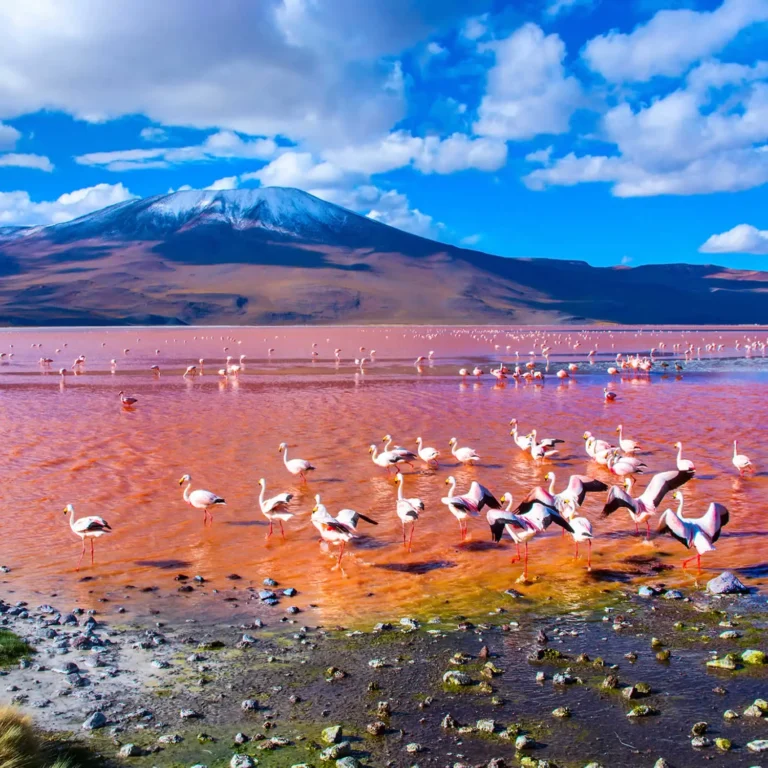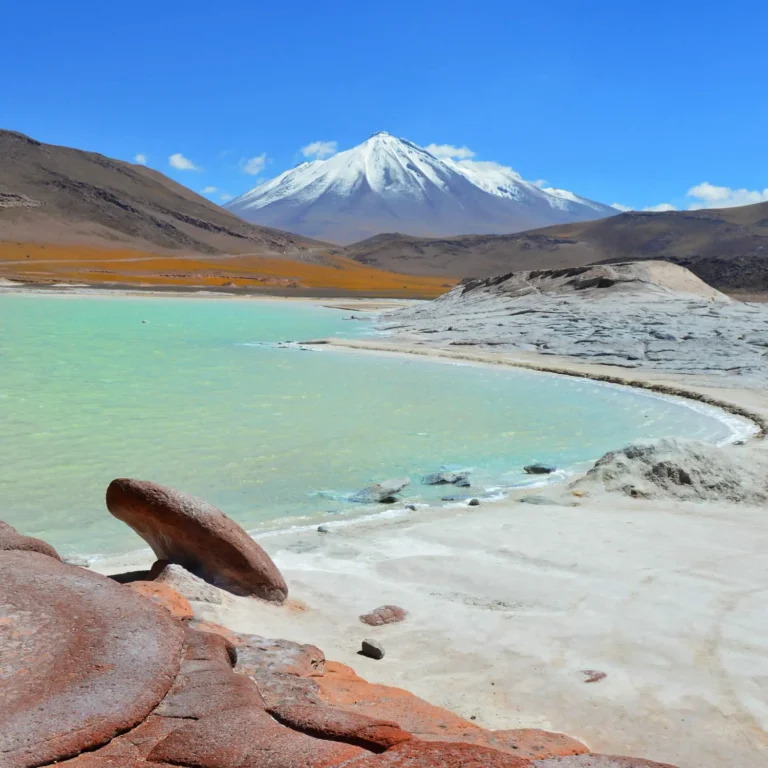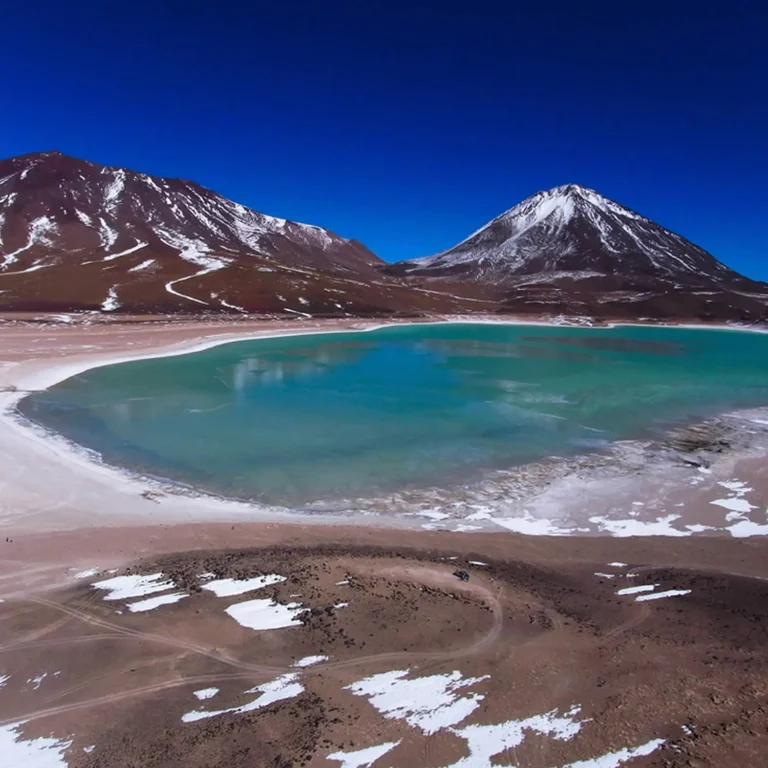Overview
Trip Highlights
- Discover the sublime beauty of the Eduardo Avaroa National Park filled with unique Andean fauna, deserts, colored lagoons, geysers and volcanos
- Bathe at the Polques hot springs
- Marvel at the idyllic turquoise waters of the Green Lagoon
- See the adorable viscachas (Andean rabits)
- Witness pink flamingos lounging in their natural habitat at Colorada (Red) Lagoon
- Explore the Salar de Uyuni, the largest salt flat in the world!
- Stay in a unique Salt Hotel!
- Enjoy a beautiful sunset at the Uyuni Salt Flat followed by an unforgettable stargazing!
Detailed Itinerary
Salar de Uyuni - Train Cemetery - Colchani - Ojos del Salar - Salt Statue of the Dakar Rally - Former Salt Hotel Playa Blanca - Incahuasi Island - Sunset inside the Uyuni salt flat
We will start our journey traveling 3 Kilometers away from Uyuni where we will find the Train Cemetery, a place that shelters dozens of old locomotives and wagons from the year 1890.
The remains of the trains take us on an imaginary journey towards a time of flourishing progress, today transformed into a rustic abandoned yard ideal for the romantic traveler who likes to photograph traces of a not so distant past.
We will then travel to the town of Colchani, a small town of salt producers located 20 km from Uyuni. In Colchani you will visit a traditional salt factory, where you can observe the way in which the salt extracted from the Salar is packed. You will have some free time to buy salt handicrafts.

We will then enter the wonderful Salar de Uyuni. At the entrance of the Salar you will see the Eyes of the Salar which are small streams of water that flow from the interior of the earth under the salt. It is said that this water has healing properties due to its saline acid concentrations.
In the dry season, the surface of the Salar de Uyuni has almost geometric shapes formed by the salt particles agglomerated in polygons. In the rainy season (December, January, February and part of March) the Salar is covered with water and resembles a giant mirror.

During our journey we will observe the Statue of Salt erected to mark the passing of the Dakar Rally in Bolivia. Then we will walk to the old Hotel de Sal Playa Blanca. Next to the Hotel there is a small mound with several flags from around the world. These symbolic flags have been left by travelers visiting Salar de Uyuni. We invite you to carry a flag of your country and leave it at this significant point.

We will have lunch enjoying the beautiful landscape inside the Salar.
We will continue our trip traveling to Incahuasi Island, home of millenary giant cacti (Echinopsis atacamensis) up to 10 meters high. The Incahuasi Island is a genuine spectacle of life inside the salt desert.
We will climb the island until we reach the viewpoint, from which we will have a 360 degree perspective of the Salar de Uyuni and a privileged view of the Tunupa Volcano.
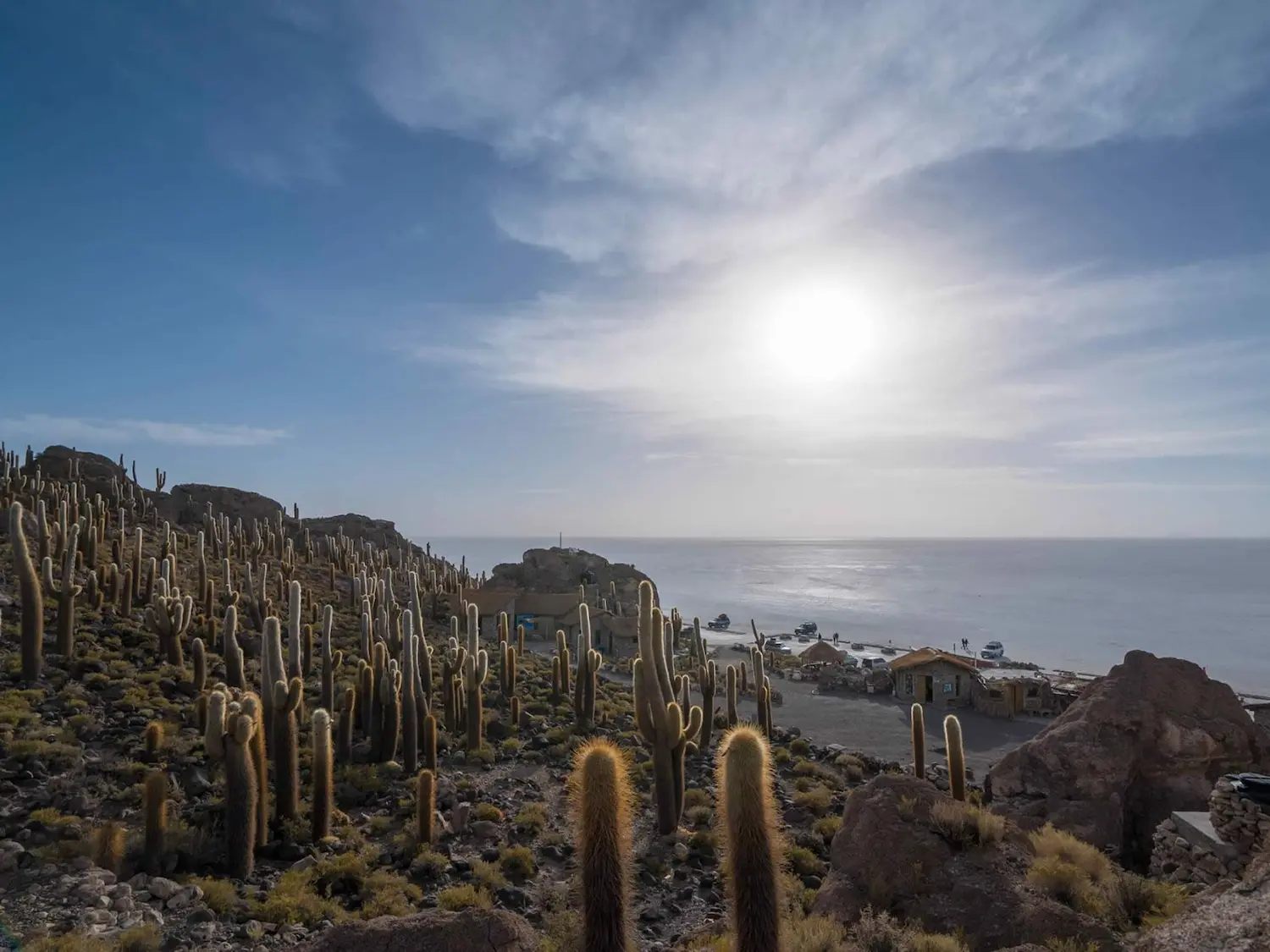
Our expedition would not be complete without witnessing a wonderful sunset inside the Salar de Uyuni.
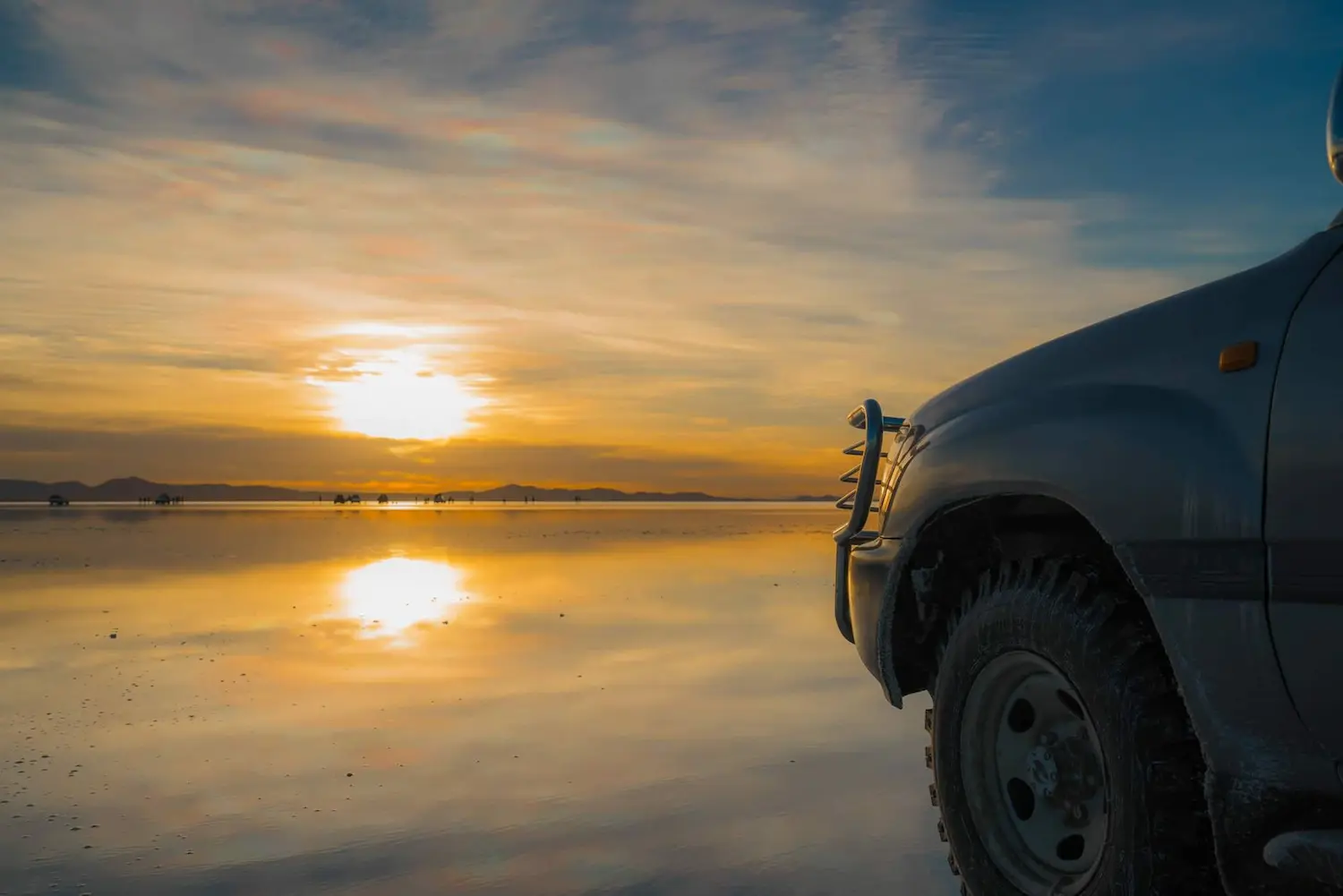
Lodging in a Salt Hotel. The Salt Hotels offer rooms with private bathroom, hot water, heating and WiFi Internet. Depending on availability, we will include lodging at Luna Salada Hotel, Hotel Palacio de Sal or at the Hotel de Sal Tayka.
Overnight
Hotel
Flight
Arrival to Bolivia
Driving
1 Hours approx
Hiking/Tour
1 Hours approx.
Meals
-/-/-
Chiguana salt flat - Observation of the Ollague Volcano - Laguna Cañapa - Laguna Honda - Hedionda Lagoon - Vizcachas Canyon
The second day of our expedition will take us to the southern part of the Uyuni region. This region offers visitors wonderful landscapes decorated by volcanoes, lagoons and Andean fauna.
During our tour we will cross the Salar de Chiguana, which has a lower salt concentration.
On the way we will see varied rock formations and the Ollague semi-active volcano (5870 m.s.) located on the border of Bolivia and Chile.
We will have lunch in the middle of nature.
We will enjoy the beauty of the Cañapa Lagoons, Chiarkota Lagoon, Laguna Honda / Corazón (4,114 m.) and Laguna Hedionda (4,532 m). The lagoons are surrounded by mountains; during the winter, you can see the snowy peaks. This area is ideal for lovers of nature and photography; it is impossible to take a bad picture of these landscapes, they are all worthy of a postcard.
We will cross the Cañon de las vizcachas, where we will observe this adorable rodent, a close relative of the Chinchillas in its natural habitat.
We will end the day at the Hotel del Desierto Tayka located at the door of the Eduardo Avaroa National Reserve in the middle of the high Andean desert.
The Hotel has rooms with private bathrooms, hot water and heating until 21:30 hrs. The hotel has oxygen cylinders at the reception, if required.

Overnight
Hotel
Flight
Arrival to Bolivia
Driving
1 Hours approx
Hiking/Tour
1 Hours approx.
Meals
-/-/-
Eduardo Avaroa National Reserve: Siloli Desert - Stone Tree - Laguna Colorada - Geothermal Field, Sol de Mañana geysers - Polques thermal springs (Chalviri Lagoon) - Dalí Desert - Green Lagoons with views of the Licancabur Volcano - Villa Mar / Valley of the Rocks - Lost Italy - San Cristobal - Uyuni
We will start the expedition at 06:30 a.m.
We will enter the Eduardo Avaroa National Reserve. The reserve has an area of 714,745 hectares and reaches an altitude of 4000 to 6000 masl. It has an exceptional scenic beauty, so it is one of the most important tourist attractions of Bolivia.
Inside the Eduardo Avaroa National Reserve strange landscapes and wind formations are can be seen with basaltic rocks and ignimbrites, gigantic volcanoes, thermal waters and fumaroles.
The most important rock formation shaped by the wind from basalt rock is without doubt the Stone Tree. We will make our first stop here and then move to Laguna Colorada, favorite nesting place for flamingos. We will observe three species of flamingos: Chilean, James and Andean.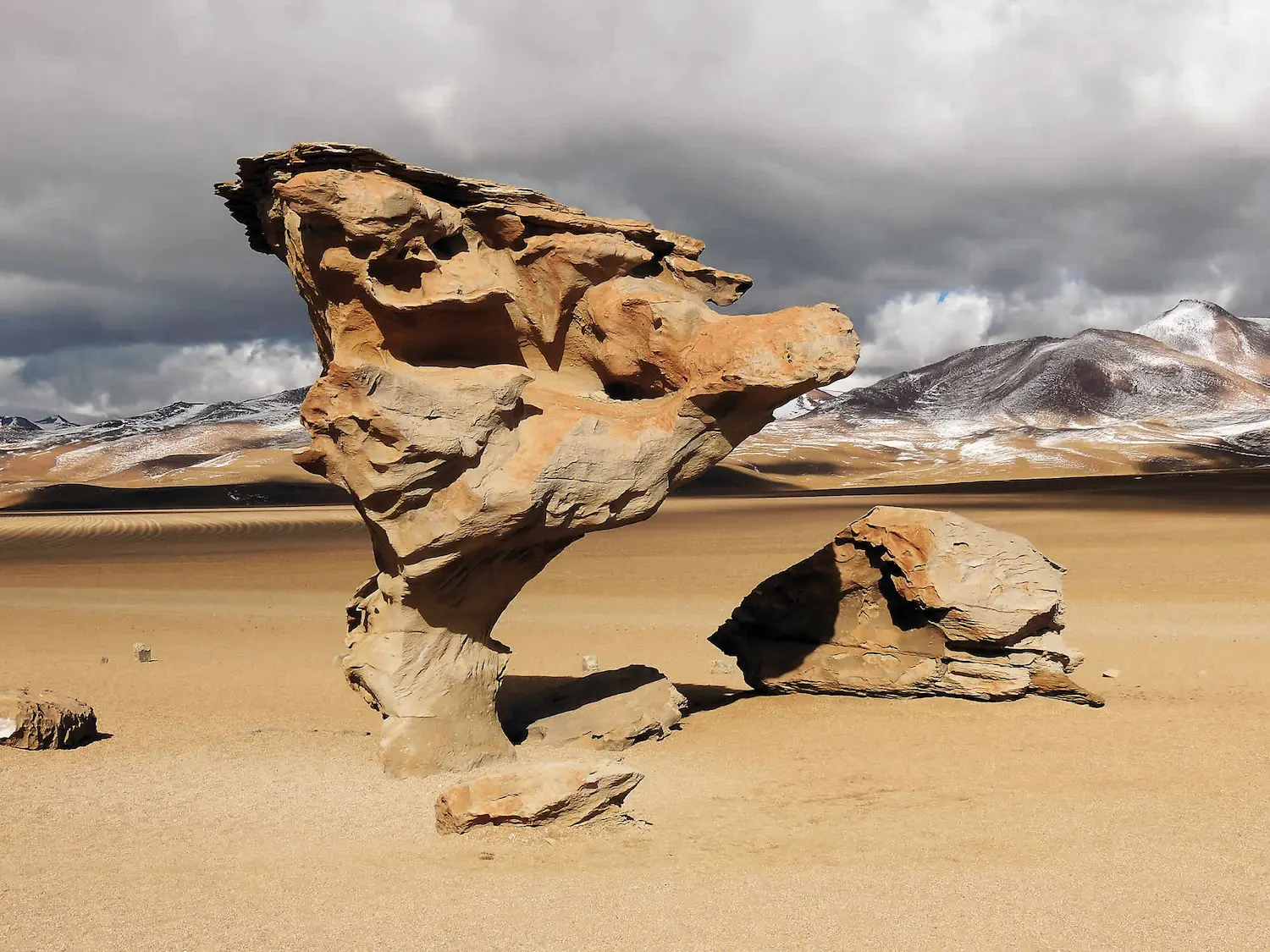
We will go to the Sol de Mañana fumaroles and geysers located at 4850 meters above sea level. We will see lava boiling intensely; the fumaroles and geysers emit mixed vapors of water and hot steam that reach heights of 10 to 50 meters, a product of the pressure with which they are emitted. These phenomena allow us to appreciate a landscape that seems to date back to the age of the formation of the Earth.

We will rest at the hot springs of Polques where you can take a relaxing bath. There is a small pool and changing rooms in the place. The recommended time to stay in the pool is 20 minutes. The thermal waters are at about 4500 meters above sea level.
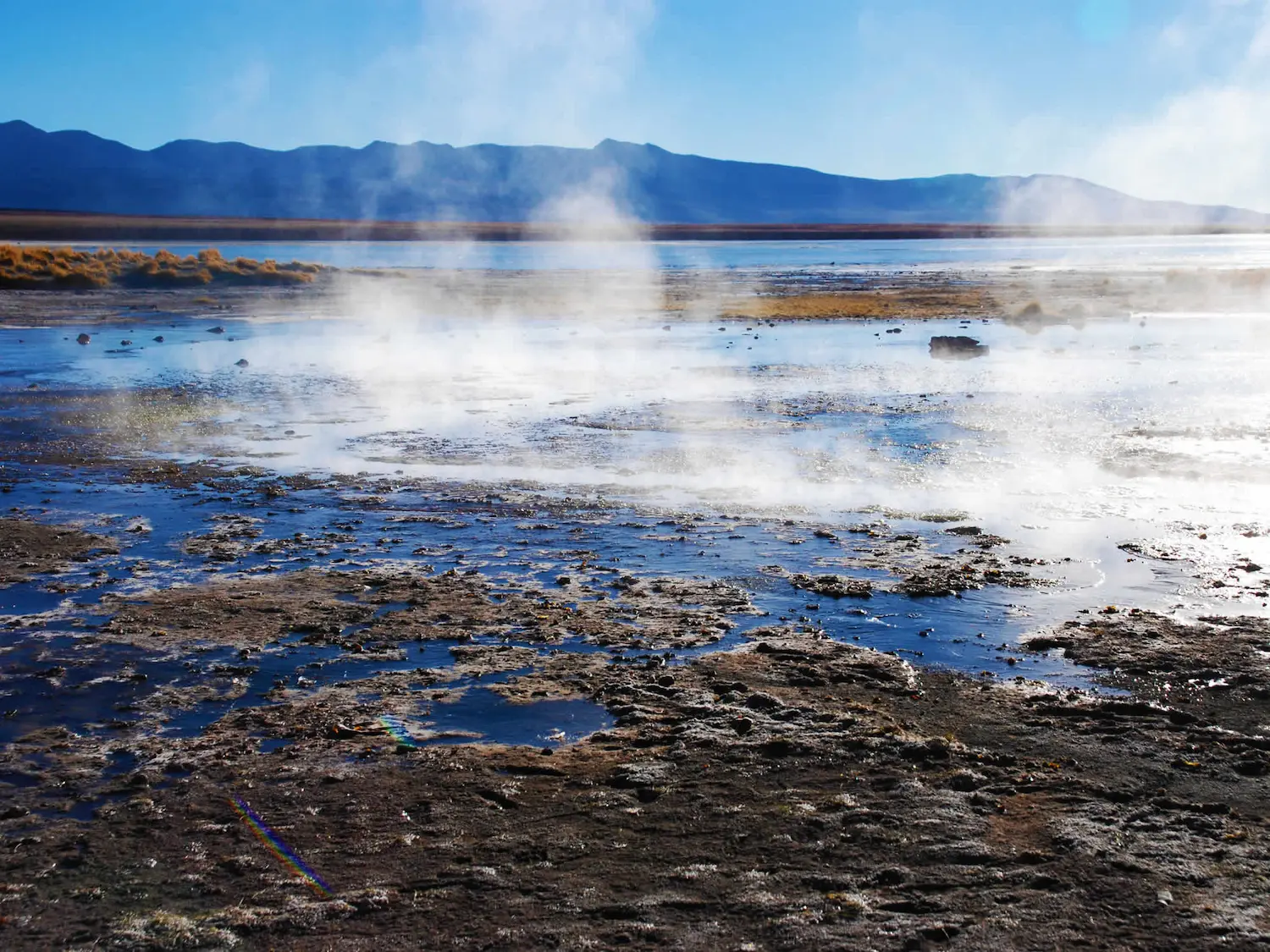
We will have lunch in a dining room located in front of the thermal water pool.
Our adventure will continue to cross the Salvador Dali Desert itself that will lead us to the dormant volcanoes Licancabur and Juriques. These volcanos are part of the volcanic mountain range of Los Andes, in the Southwest of Bolivia. Both are the border with Chile, at the foot of both volcanoes lies the Laguna Verde.
The intensity of the green color of the water in the lagoon depends on the wind in the area. In case there is no wind you can see the reflection of the Licancabur Volcano in the crystal clear waters of the lagoon.

We will start our return trip to Uyuni by visiting the White and Black Lagoons. During our tour, we will cross small forests of queñuas, and high Andean bofedales and wetlands.
The Quetena Grande wetland is one of the most important and representative due to its good state of conservation. It is inhabited by flamingos, vicuñas, the Andean cat and the suri – incorrectly called «ostrich», this bird is similar to a ñandú and is found exclusively in South America.
Before arriving at the town of Villamar we will make the last stop in our expedition visiting the Valley of the rocks, also called lost Italy.
Our 3-day adventure through the deserts of Sal, colored lagoons and magnificent landscapes will conclude in the city of Uyuni at around 7:00 p.m.
Overnight
Hotel
Flight
Arrival to Bolivia
Driving
1 Hours approx
Hiking/Tour
1 Hours approx.
Meals
-/-/-
Services
Include
- Pick up from your Hotel in Uyuni, Uyuni Bus Station or Uyuni Airport.
- Private Transportation: 4×4 vehicle only for people requesting the tour.
- Food: Day 1: Lunch. Day 2: Breakfast and Lunch. Day 3: Breakfast and Lunch. Drinks during lunch included.
- Lodging: Day 1: Hotel Luna Salada, Hotel Palacio de Sal, Hotel de Sal Tayka (depending on the availability of the Hotel). Day 2: Hotel del Desierto Tayka or the Hotel Mallku Cueva. (depending on the availability of the Hotel).
- Experienced driver in the area. The driver speaks only Spanish.
Not Include
- Entrance tickets to:
- Incahuasi Island: 30 Bs.- per person = 5 $ us.- per person.
- Eduardo Avaroa National Reserve 150 Bs. – = 22 usd per person. Bring currency in Bolivianos to pay for the entrance tickets. It is not allowed to pay with dollars or another currency.
- Tourist guide in English
- Dinners at selected hotels.
What to bring
- Comfortable and warm clothing.
- Comfortable footwear (ideally for trekking).
- Swimsuit and towel (to bathe in the thermal waters of Polques).
- Sunglasses.
- Sunscreen.
- Cap or hat
- Additional beverages and water
- Pills to alleviate altitude sickness

